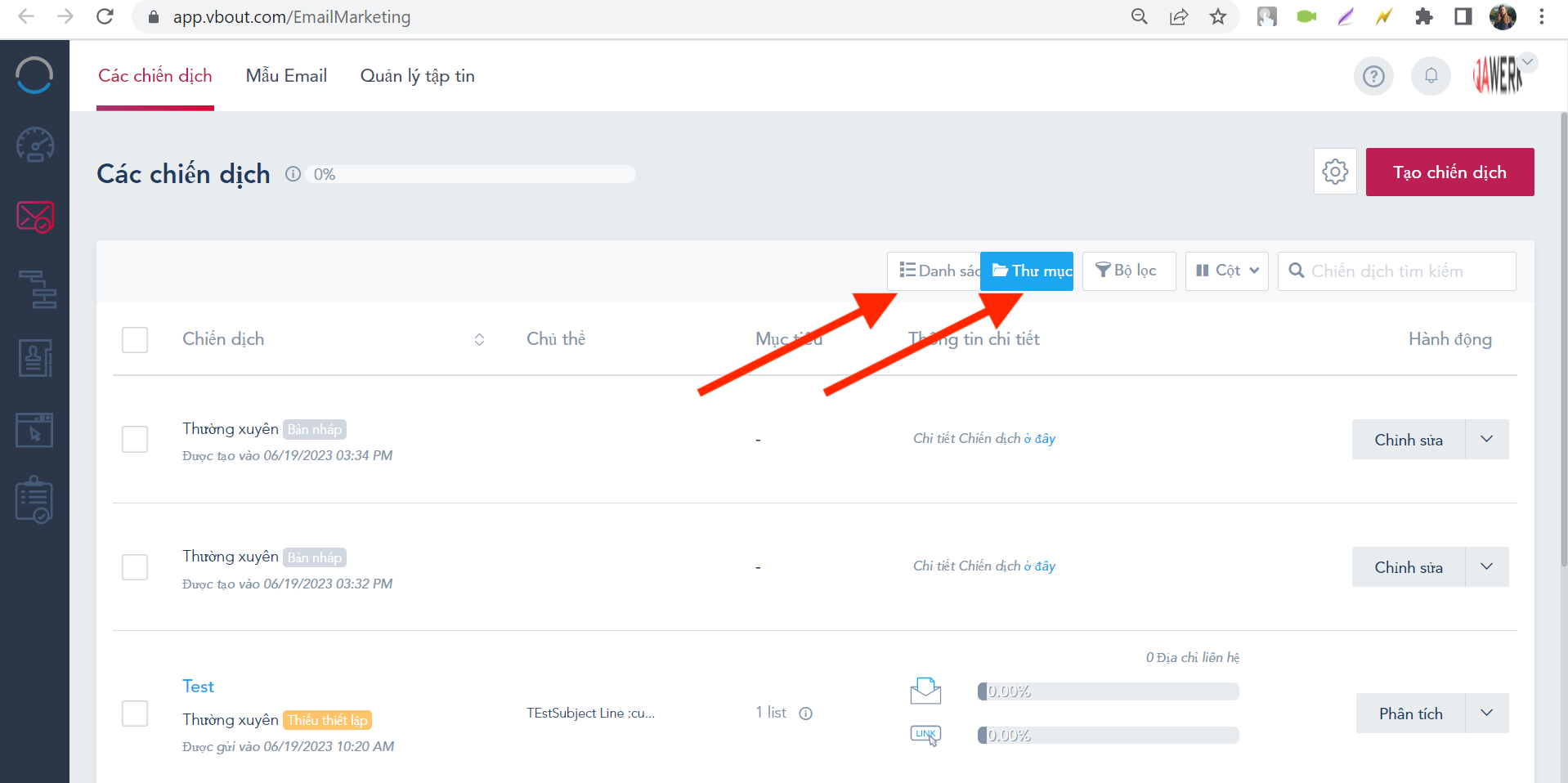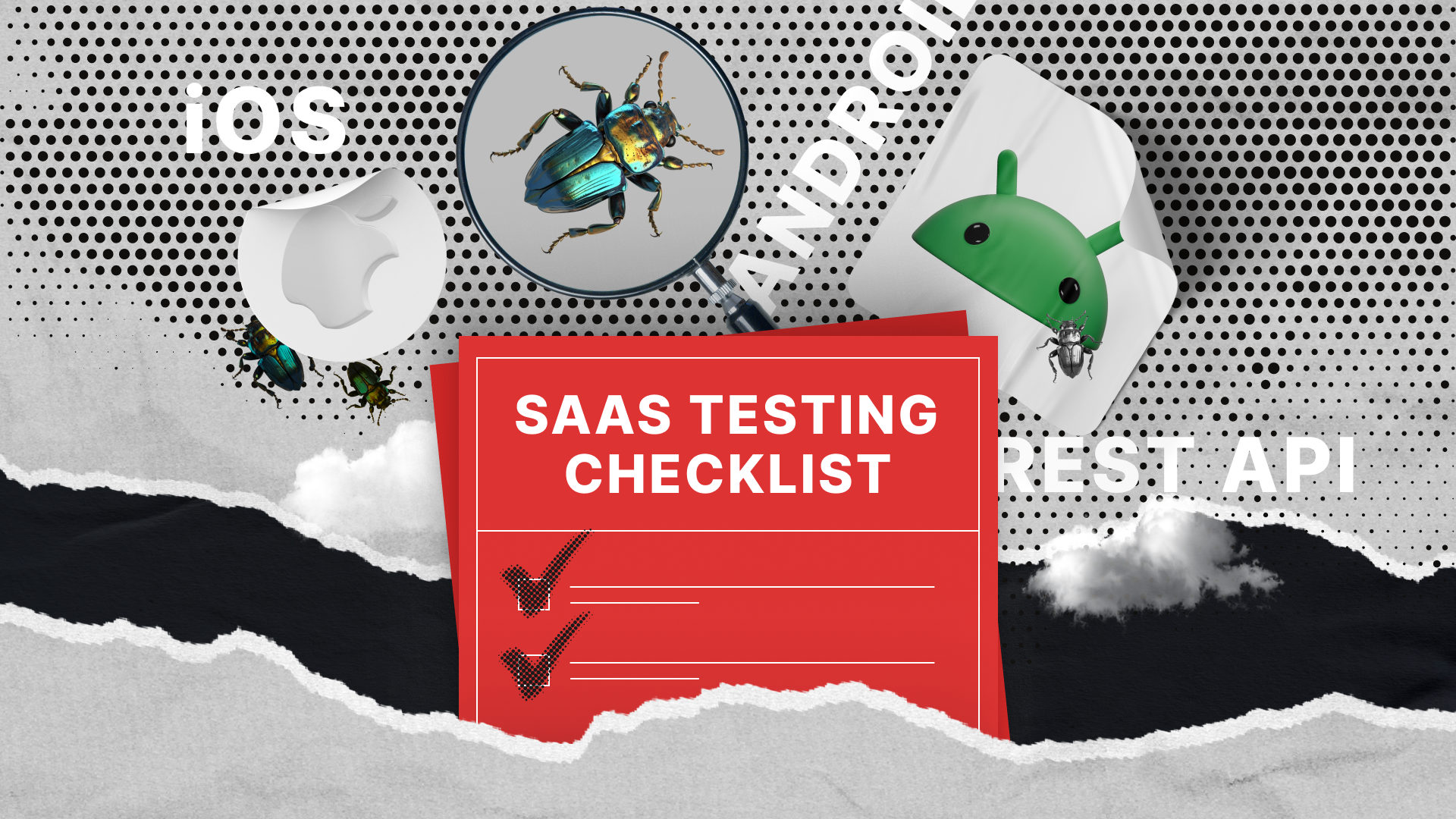In the evolving digital age, Software as a Service (SaaS) has become integral to businesses worldwide. With a projected market size of over $462 billion by 2028, the SaaS model delivers applications over the Internet without requiring users to install or maintain any software.
As seasoned professionals in this domain, we understand the importance of thorough SaaS application testing. That’s what helps keep these platforms fully operational, achieve top-tier security, and provide a flawless, user-centric experience.
With our extensive experience, we have designed a comprehensive SaaS testing checklist that covers the critical testing areas. Whether you’re new to testing SaaS applications or looking to refine your existing strategies, this guide will provide invaluable insights for SaaS testing.
Understanding SaaS Testing
SaaS testing is the process of verifying and validating the quality and functionality of SaaS applications before they are released to the end-users.
SaaS applications are typically deployed on the cloud, meaning the entire infrastructure is managed by a cloud services provider like AWS, Microsoft Azure, or Google Cloud. However, SaaS apps can also be launched on-premises, which means that the software is installed and hosted on the SaaS company’s own servers and infrastructure. The latter is known as self-hosting.
Regardless of the deployment model, SaaS apps have their unique set of peculiarities and challenges that necessitate a robust software testing process in place. Let’s have a closer look at each of them.
SaaS Testing Challenges
- Multi-tenancy: One of the primary challenges of testing SaaS applications is the multi-tenant architecture. SaaS applications serve multiple users and organizations (tenants) who share the same infrastructure and resources. This means that SaaS testing has to ensure that the app can handle concurrent requests from different tenants, without compromising the performance, security, and data isolation of each tenant.
- Configurability: SaaS applications allow users to customize and configure various aspects of the application, such as features, functionality, user interface, and data. This means that SaaS testing has to ensure that the app can support different configurations and preferences of each user, without affecting the quality and functionality of the application.
- Upgrade Frequency: SaaS solutions typically require frequent updates and iterations to stay competitive and continuously deliver value to users. This means that SaaS testing has to be fast and efficient, and able to cope with frequent changes and new features in the application.
- Scalability: In the world of SaaS, apps need to be scalable to handle the increasing number of users and requests, as well as the varying load patterns. Testing for scalability can be challenging, as it requires simulating realistic and diverse user scenarios, generating high volumes of test data, and measuring the performance and reliability of the application under different load conditions.
- Integration: SaaS platforms often need to integrate with other applications, systems, and components, such as third-party APIs, databases, web services, and cloud platforms. Testing for integration requires verifying the compatibility, functionality, and security of the interactions between different components, as well as handling the dependencies and changes in the integrated systems.
- Compatibility issues: SaaS apps need to work on different devices, browsers, and platforms, which can pose compatibility problems. Testing for compatibility can be time-consuming and costly because it may include web, iOS app testing, Android, and desktop app testing, depending on the platforms the product supports.
- Accessibility issues: SaaS applications need to be accessible to users with different needs and preferences, such as language, location, and disability. Testing for accessibility requires specialized tools and expertise to ensure the usability, readability, and responsiveness of the user interface, as well as complying with the accessibility guidelines and best practices.
Numerous digital companies allocate a great amount of resources to testing because they realize its critical significance. With our SaaS testing checklist, we aim to simplify this intricate process, guiding you how to achieve top-tier SaaS application performance.
Pre-Testing Preparations
Proper preparation is as vital for SaaS testing as for other software types. Before beginning any test, make sure you follow the preliminary steps to obtain accurate results instead of unexpected ones. Neglecting this stage could lead to inefficiencies, misinterpretations, or costly oversights. See our concise checklist to ensure you’re on the right track:
Setting Up the Test Environment:
- Secure a stable, replicable environment
- Clearly separate the test environment from the production
- Schedule regular environment updates and monitoring
Identifying Test Tools and Resources:
- Opt for tools tailored for SaaS application testing
- Allocate necessary hardware and software resources
- Ensure compatibility
Finalizing Test Objectives and Goals:
- Define the scope of your testing
- Set clear and measurable objectives
- Prioritize critical areas within the application
SaaS Functional Testing
After establishing the groundwork, we move into the core of SaaS testing: evaluating your application’s behavior. Here, we validate that primary functionalities operate as intended. Drawing on years of practical experience, we’ve put together a simple SaaS functional testing checklist for this important stage:
Test Core Functionalities:
- Test user registration, login, and verification
- Validate data input, processing, and storage
- Test UI-server-database communications
- Ensure relevant error messages display
- Confirm account recovery processes
- Validate multi-factor authentication
- Test user settings and modifications
- Check user roles and permissions
- Test buttons, links, and menus
- Ensure consistent design across pages
- Validate form submissions and retrieval
- Check browser and screen compatibility
- Test web responsiveness
- Validate tooltips and help text
- Test modal windows and pop-ups
- Check page transitions/animations
- Test navigation and flow
- Check application performance
- Validate accessibility features
- Ensure user feedback mechanisms
- Test notifications/alerts
- Test under different network conditions like high latency, low bandwidth, lost/interrupted connection
- Validate session timeouts
- Test print/download functions
- Test application under max user load
SaaS Security Testing
With cyberattacks on the rise, securing your SaaS platform is more vital than ever. Many businesses have encountered security incidents targeting their SaaS applications. Given the high stakes, performing security testing isn’t just a good-to-have; it’s a must. Drawing from our extensive experience in this field, we’ve crafted this SaaS security testing checklist to guide you through the essential steps to fortify your application:
Vulnerability Assessment:
- Check for outdated software libraries or frameworks vulnerable to attacks
- Identify any unprotected services or unnecessarily open ports
- Review settings for any sign of default credentials or overly permissive configurations
- Scan for unintentional exposure or accessibility of sensitive data
- Monitor for insecure data storage or transmission methods
- Assess the potential for code injection or malicious file uploads
- Attempt to bypass user authentication systems and measure their resilience
- Simulate scenarios that might lead to data breaches
- Probe server vulnerabilities to determine potential system compromises
- Check for susceptibility to SQL, OS, and other types of injection attacks
- Evaluate the possibility of Cross-Site Scripting (XSS) and Cross-Site Request Forgery (CSRF) attacks
- Investigate for exposed internal interfaces or hidden functionalities
Data Encryption Checks:
- Validate that data at rest is encrypted using industry-approved methods like AES, SHA, or RSA
- Ensure data in transit is encrypted with secure and updated protocols like TLS, SFTP, SSH, and HTTPS
- Review key management processes for robustness and compliance
- Check for potential weak encryption algorithms or ciphers in use
- Assess whether proper segmentation is in place, ensuring sensitive data is encrypted differently
Session Management Checks:
- Evaluate the effectiveness and security of session timeouts
- Verify the secure generation and storage of session tokens
- Confirm proper session termination after logout or inactivity
- Check for susceptibility to session fixation or session replay attacks
- Ensure sessions are bound to specific attributes, like IP or User-Agent, to prevent hijacking
SaaS Compatibility Testing
With so many devices, browsers, and operating systems available, compatibility testing becomes an essential component of SaaS software testing. Completing this section of our testing checklist will guarantee that your application delivers a consistent experience, no matter where or how it’s accessed.
Devices and Browsers:
- Test on major desktop browsers: Chrome, Firefox, Safari, Edge
- Validate on mobile browsers for Android and iOS
- Check functionality on tablets and phablets
- Ensure seamless experience on smart devices
- Assess performance on legacy browsers
- Validate compatibility with Windows, macOS, and Linux
- Test on different versions, especially the prevalent ones
- Ensure adaptability on mobile OS like Android and iOS
- Check for any OS-specific glitches or hang-ups

- Assess the appearance on varying screen sizes from small to ultra-wide
- Validate responsive design elements across resolutions
- Ensure text readability on all screen sizes
- Check icon and image clarity and alignment

Integration Testing
The complexity of SaaS applications often means they are interconnected with various services, platforms, and tools. Integration testing ensures these connections are robust and efficient. Within our SaaS testing plan, this stage is extremely important, as it determines the seamlessness of your web-based application’s interactivity with other elements. Delving further into the topic, we explore the specifics of effective integration testing:
API and Endpoint Validations:
- Test all API endpoints for expected responses
- Validate the robustness of API error handling
- Check the consistency of data sent and received
- Ensure proper authentication and authorization for secured endpoints
Third-Party Integrations:
- Validate integrations with popular CRMs, ERPs, and other tools
- Ensure consistent data flow between integrated systems
- Test the responsiveness of third-party plugins
- Verify error handling during third-party service downtimes
- Validate data integrity when stored and retrieved
- Test the resilience against SQL injection and other threats
- Ensure proper indexing for optimized queries
- Check data backup and restoration processes
Payment and Transaction Integrations:
- Validate the workflow of payment gateways
- Test the consistency and security of transaction processes
- Ensure proper error messages during transaction failures
- Verify the seamless integration of different payment methods
SaaS Backup and Recovery Testing
The reliability of any SaaS solution hinges on its ability to recover lost data, making backup and recovery testing an integral part of our testing checklist. Ensuring the capacity to endure and rebound from disruptions is crucial in the realm of SaaS application testing. By meticulously testing backup and recovery strategies, you bolster confidence in the application’s resilience.
Data Backup Protocols:
- Validate regular backup schedules
- Check the integrity of backed-up data
- Ensure encrypted storage of backups
- Test backup versioning and timestamps
Recovery Processes:
- Initiate and monitor full system recovery
- Validate specific data point restoration
- Test recovery under varied scenarios like power loss, hardware failure, accidental deletion, overwriting, misconfiguration, or cybersecurity breach
- Ensure minimal downtime during recovery
Backup Storage:
- Check backup data compression methods
- Validate storage redundancy
- Test off-site and cloud backup solutions
- Ensure secure access controls to backups
Backup Notifications and Alerts:
- Verify notifications for successful backups
- Trigger alerts on backup failures
- Monitor backup storage threshold warnings
- Validate user permissions for backup notifications
SaaS Localization and Globalization Testing
Starting with your SaaS product testing, think about all the different people using your app. Not all of them use English or the same date styles. This means we need both localization and globalization testing, which are big parts of software testing.
Localization ensures that your SaaS application caters to a specific region, considering language, cultural nuances, and regional settings. Globalization, on the other hand, ensures that the application can be used universally, irrespective of local standards.
Here’s what you need to focus on when testing SaaS applications for localization and globalization:
Language and Text Elements:
- Validate text translation accuracy for target languages
- Ensure no text truncation or overlapping
- Check the correct display of special characters and accents
- Confirm that error messages are translated correctly

- Validate that date and time formats match regional standards
- Ensure currency symbols and values are displayed correctly
- Check for the correct usage of the 12-hour and 24-hour clock, as per the region
- Images and icons resonate with the regional culture
- Avoid any cultural taboos in content or design
- Ensure the color palette is culturally acceptable (some colors may have negative connotations in certain regions)
Input Methods:
- Validate compatibility with regional keyboards
- Ensure that the application supports local input methods like different scripts or gestures
Regional Settings:
- Confirm the application supports regional settings like address and phone number formats
- Check the correct sorting order for the local language
- Test the application’s functionality after localization changes
- Ensure that the core features remain intact in the localized version
SaaS Maintenance Testing
Launching a successful SaaS application is just half of the deal. You also need to take care of ongoing enhancement and reliability. In this context, maintenance tests guarantee the enduring efficiency and functioning of the software. This aspect of our SaaS testing checklist ensures that your application stays consistent, even with the introduction of updates and alterations.
Database and Data Integrity:
- Validate data consistency post-updates
- Ensure backup processes function correctly
- Confirm data migration works smoothly after changes
Functionality Post-Updates:
- Test primary features after each update
- Check for any new bugs or issues
- Verify that old bugs haven’t resurfaced
Performance and Scalability:
- Monitor application speed and responsiveness post-updates
- Validate that the software can handle increased user loads
- Ensure server stability during peak times
Security Patches:
- Test for vulnerabilities after applying security patches
- Ensure no new security loopholes have emerged
- Confirm that old security issues remain resolved
Integration and Compatibility:
- Check how updates interact with integrated tools and platforms
- Test on diverse devices and browsers
- Confirm that the application is still compatible with various operating systems
User Experience and Interface:
- Validate that user journeys remain intuitive after changes
- Check visual elements for consistency post-updates
- Ensure that interface changes haven’t affected the user experience negatively
Why You Can't Skip SaaS Testing
Navigating through the process of SaaS testing, we’ve explored its many parts and essential items on a checklist. Cloud-based software testing plays a crucial role in your business success; If you’re still unsure about its value, let’s emphasize its primary benefits.
Higher User Retention
One of the mainstays of SaaS success is user satisfaction. Systematic SaaS testing helps you identify and fix any issues before they become major problems for your users. This helps to improve user satisfaction and retention rates, as users are more likely to continue using a product that works well and meets their needs.
Protection Against Hackers
Security breaches can lead to significant economic and reputational damages. Testing SaaS rigorously can uncover and fix vulnerabilities, safeguarding your platform and users from potential threats. Conduction security testing is crucial to shield your application from such pitfalls.
Economic Savings
Addressing defects early in the development cycle is notably more cost-effective than during later stages. Consistent testing ensures that defects are caught early, translating to significant cost savings. According to IBM, the costs of discovering defects after release are up to
30 times higher compared to fixing bugs in the design and architectural phase.
Boosted Brand Trustworthiness
A SaaS platform free from major issues and security threats can significantly enhance a brand’s reputation. This trustworthiness can be a crucial differentiator in a competitive market, attracting and retaining more users.
Closing Remarks
As we wrap up our talk on SaaS testing, we’d also like to share the success stories of our SaaS clients. We’ve helped Penpot, the first open-source design and prototyping platform, polish its product before the official release and go from beta to a market-ready app, gaining over 250K happy subscribers.
Another case illustrating the value of expert SaaS testing is Arctype, a collaborative SQL client and DB management tool. With QAwerk’s ongoing manual and automated testing, they eliminated critical bugs and achieved app stability. We helped them increase the frequency of releases, leading to their acquisition by ClickHouse, a leading open-source DB system for generating real-time analytics.
Our QAwerk team also helped Evolv, an AI-driven SaaS for marketers, run regression tests 50% faster, resulting in faster delivery of new features and higher user satisfaction.
Long story short, SaaS testing is a multifaceted process that requires both time and expertise. The good news is that with QAwerk, you can test your SaaS application for free if you join our Bug Crawl program.
Improve your SaaS app for free!
Our QA engineers will perform the first round of exploratory testing for free! Sign up to participate in our Bug Crawl program and receive a detailed bug report highlighting major and minor areas for improvement.

